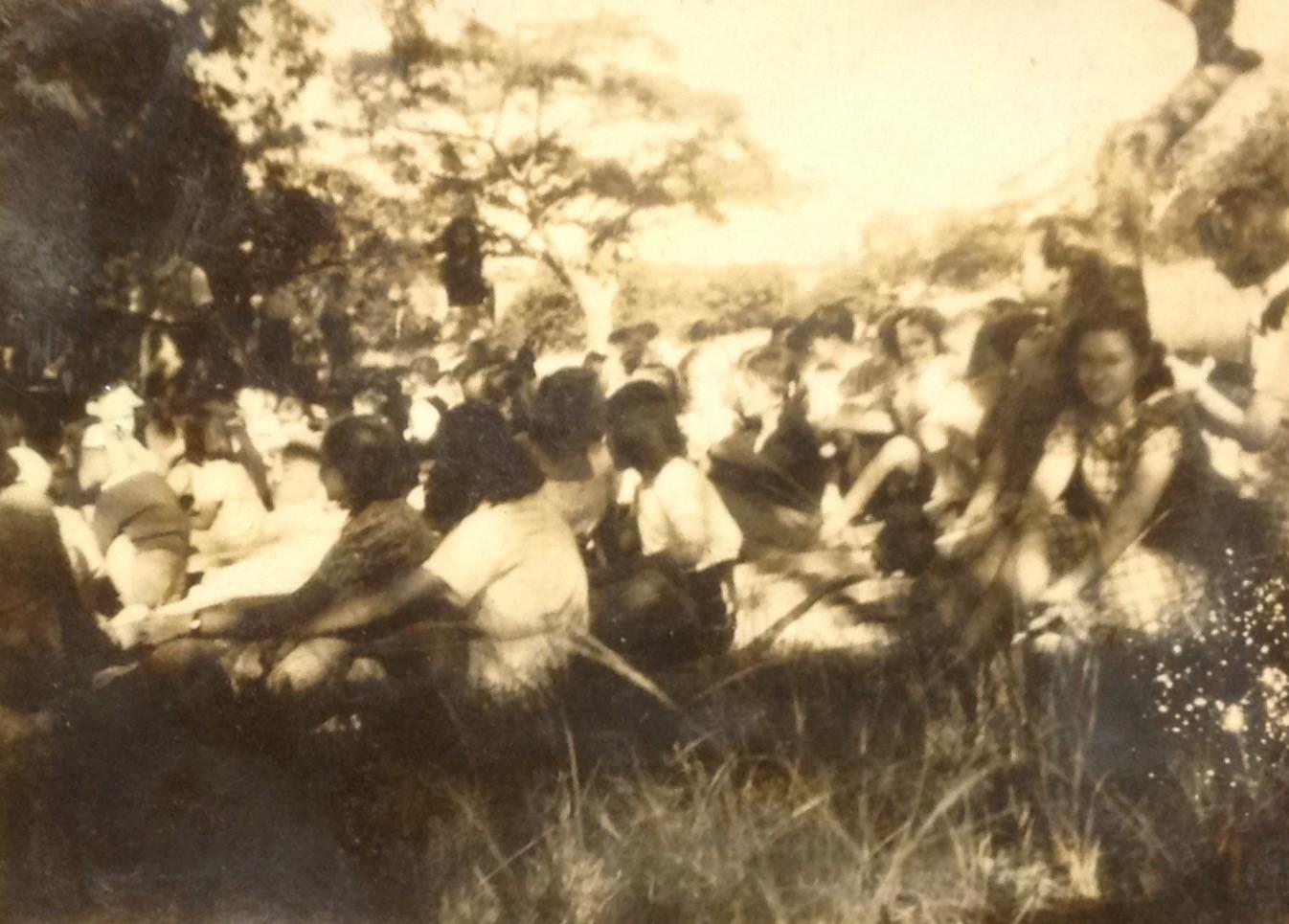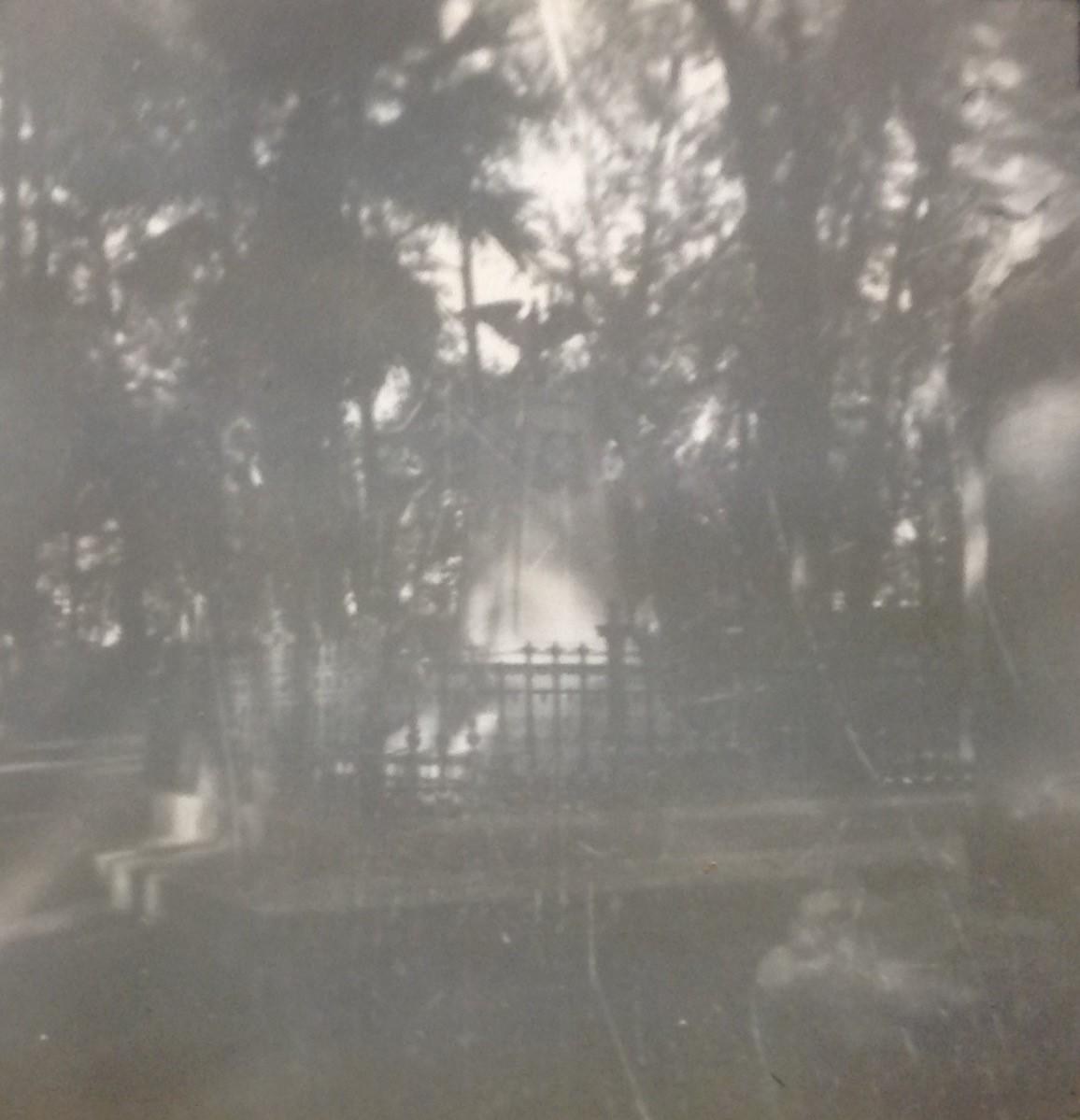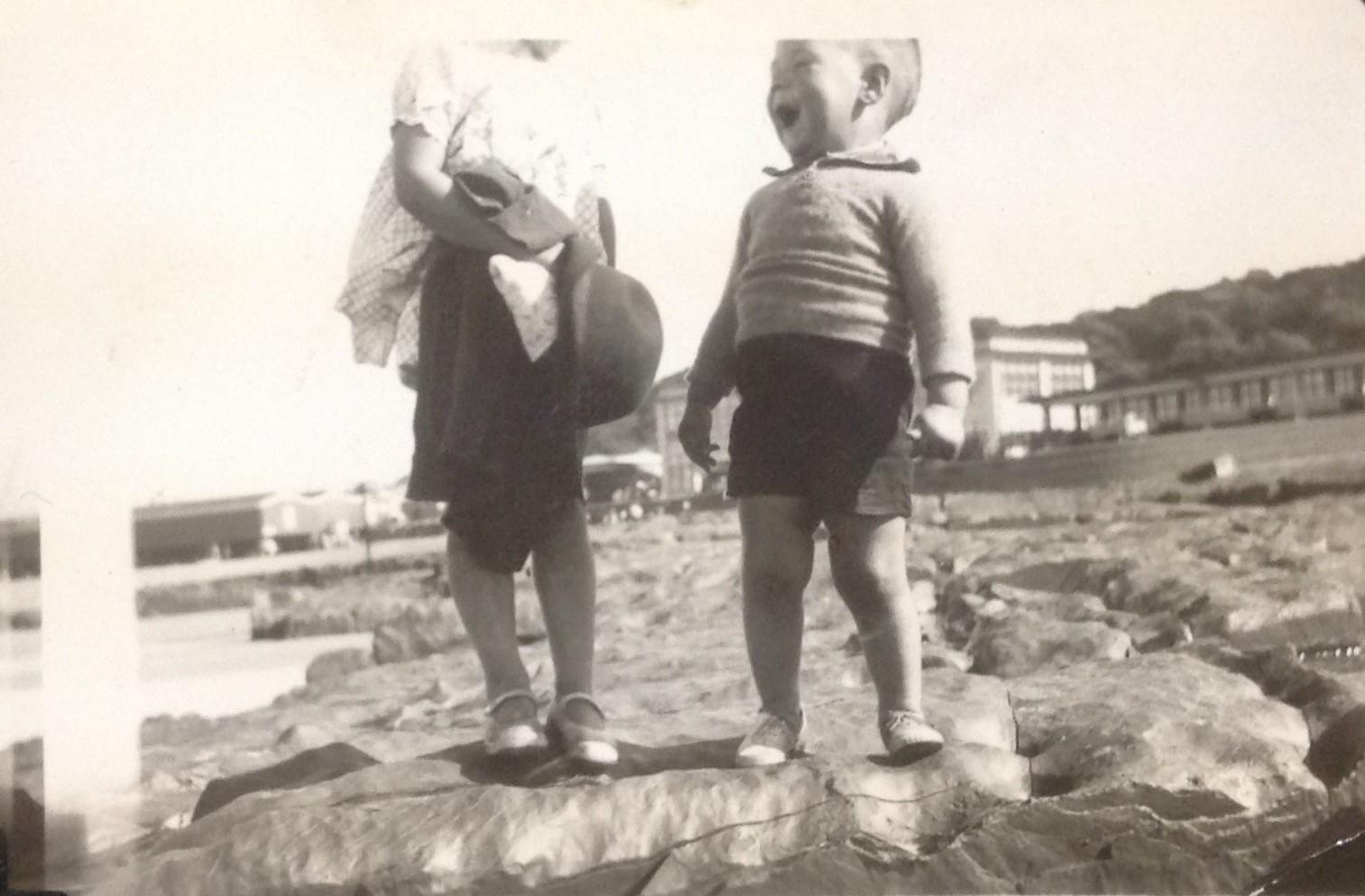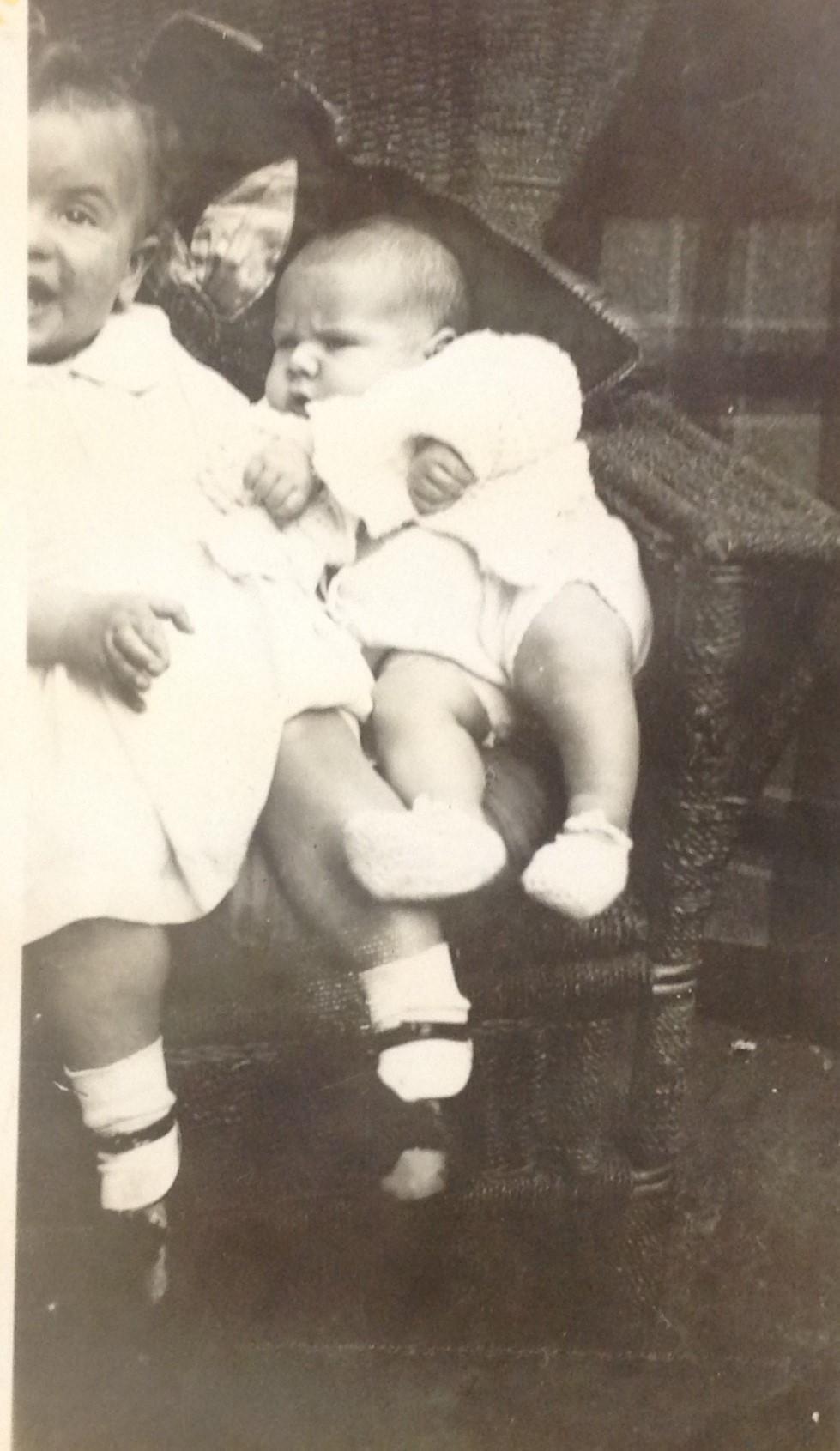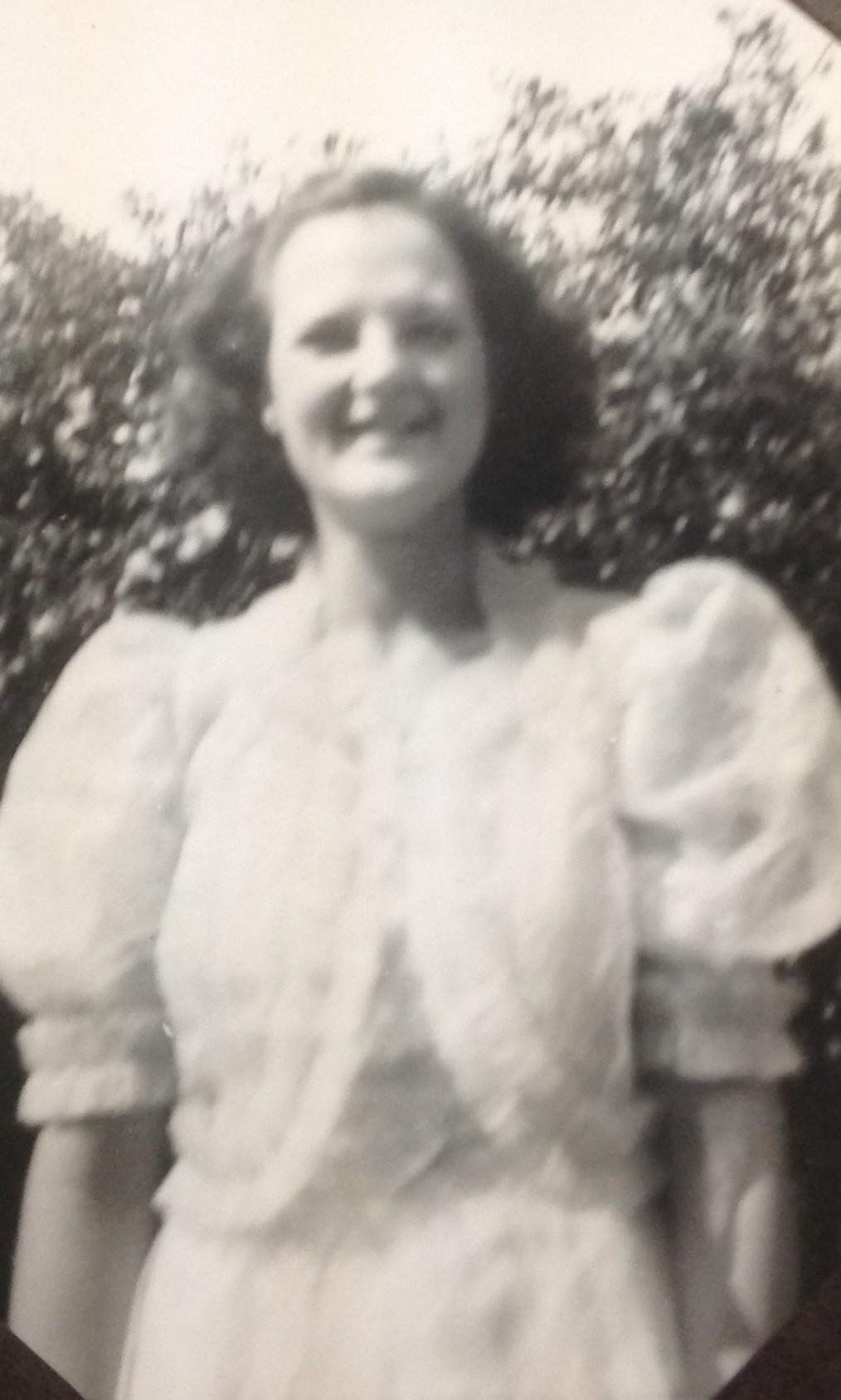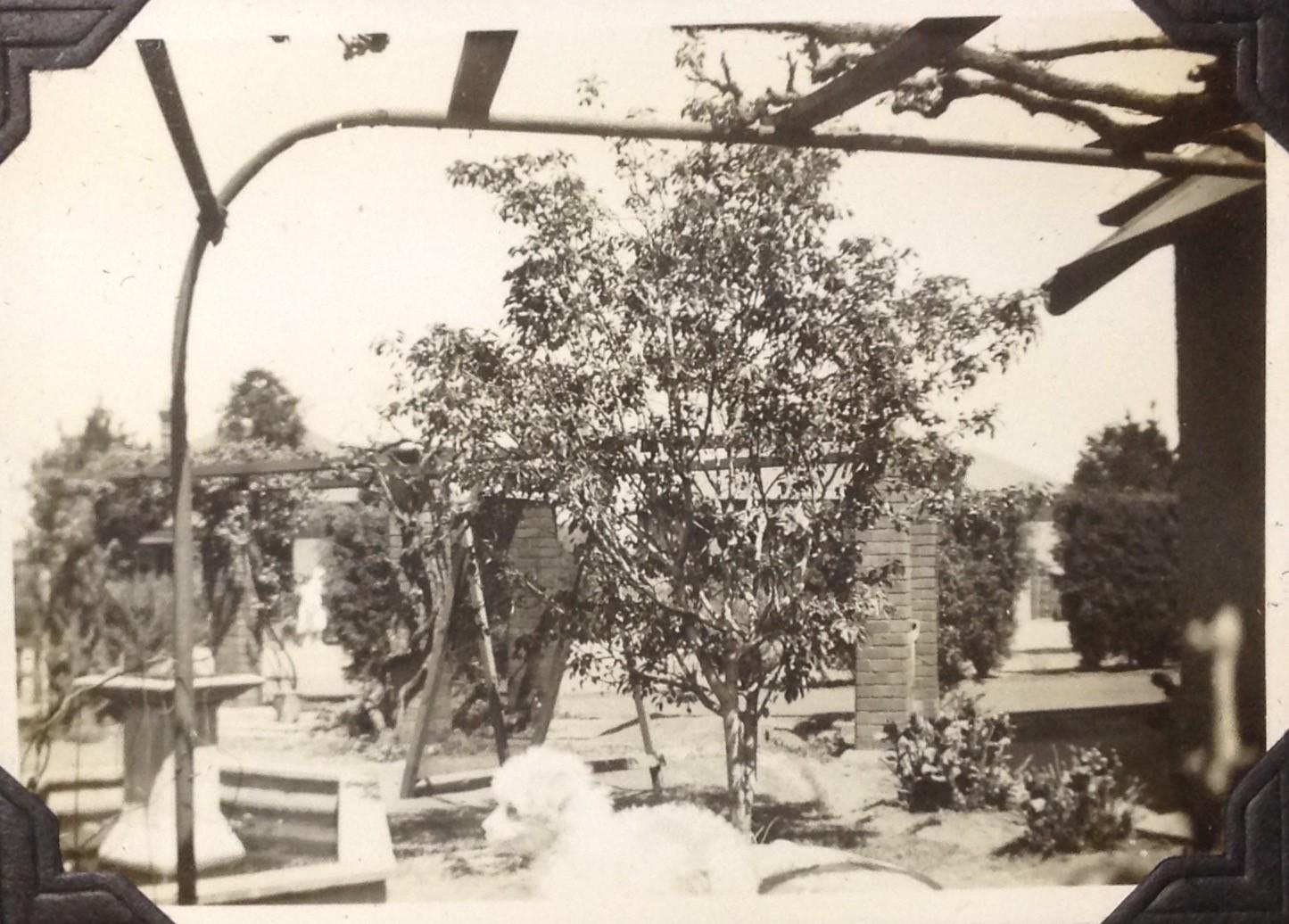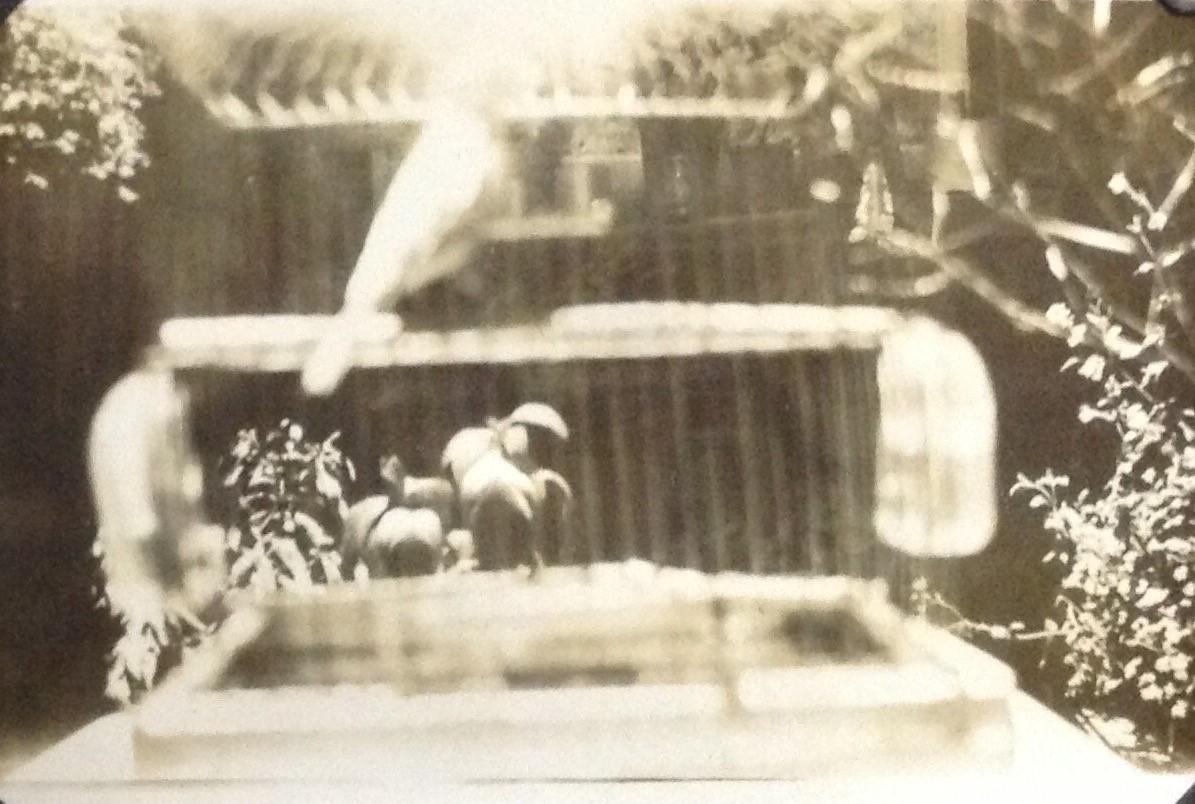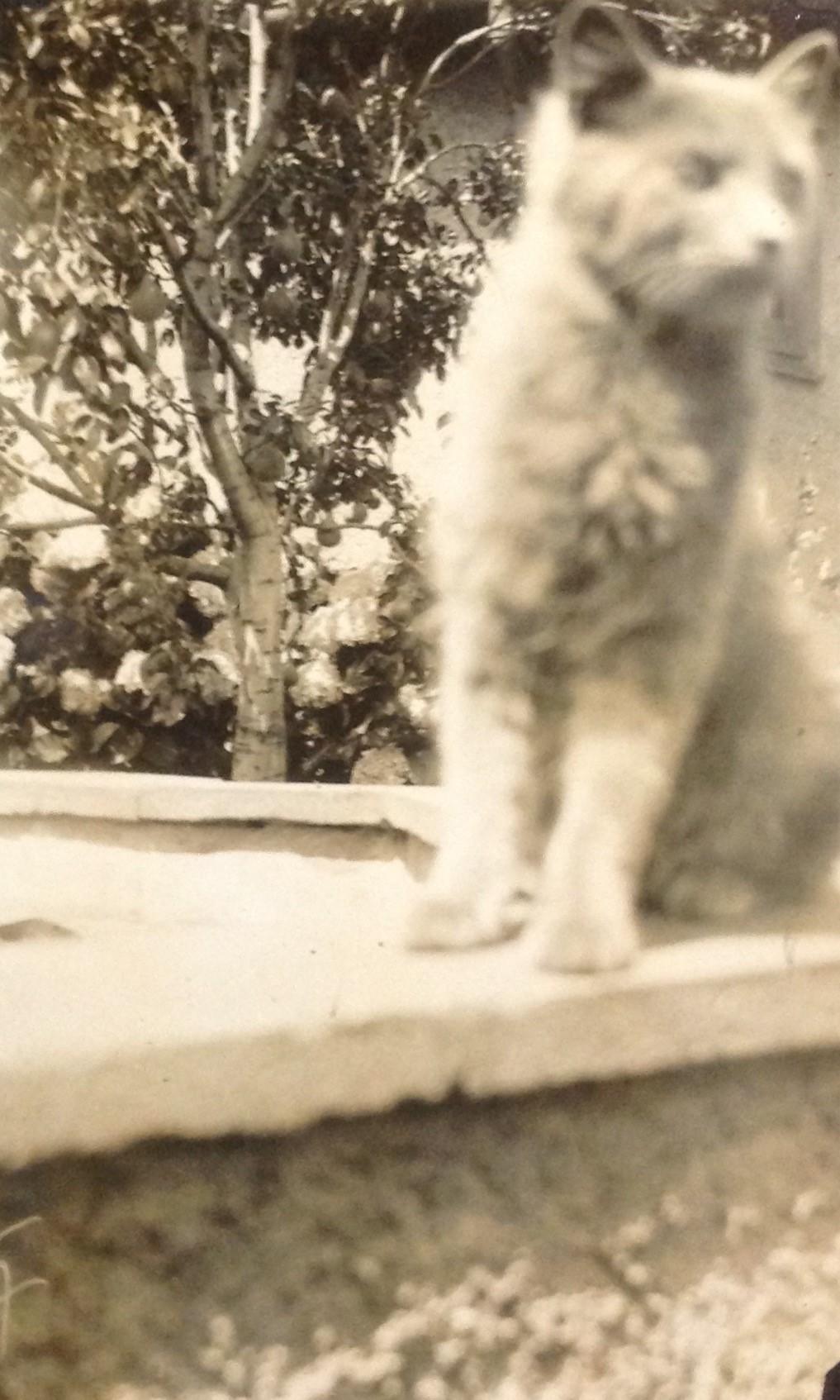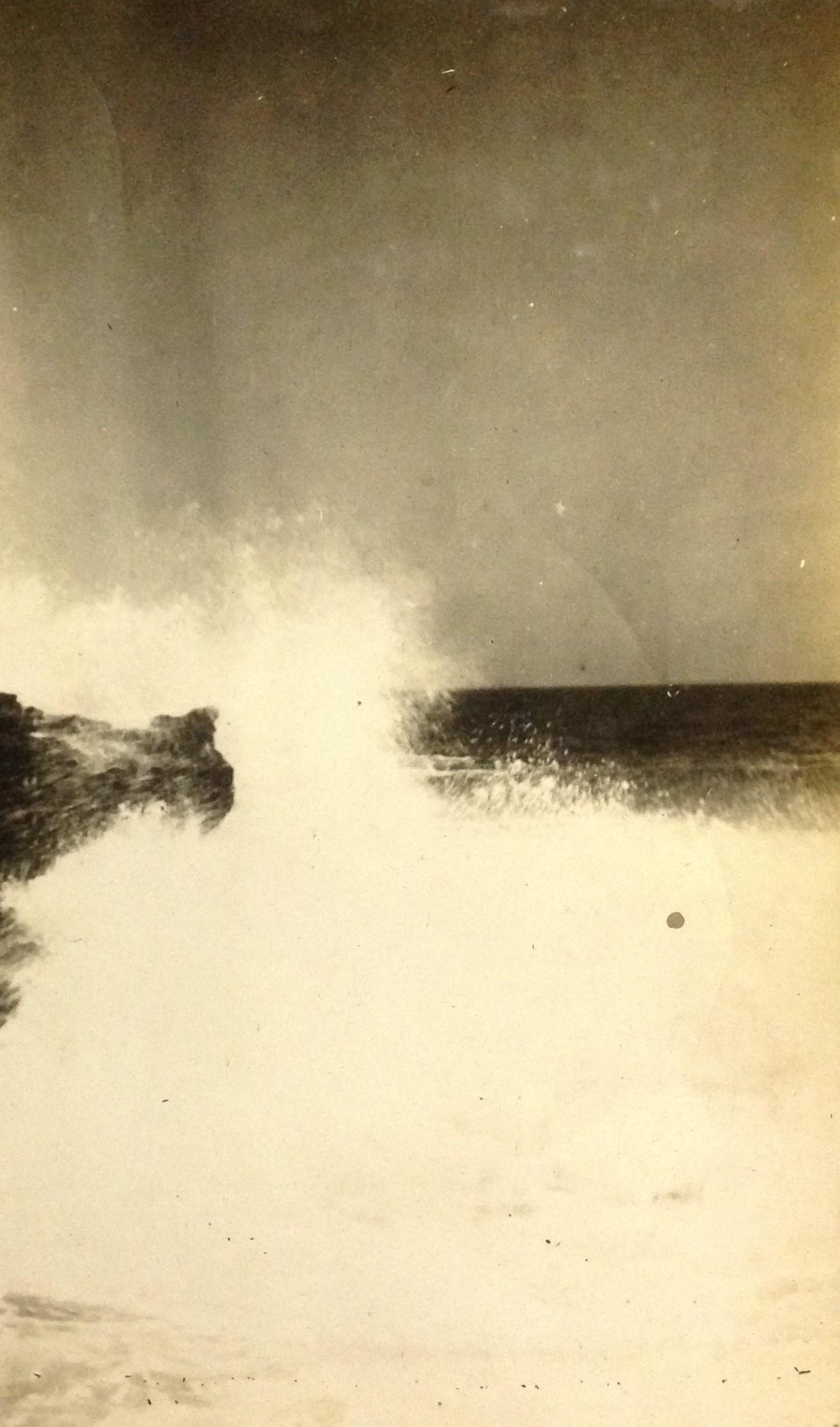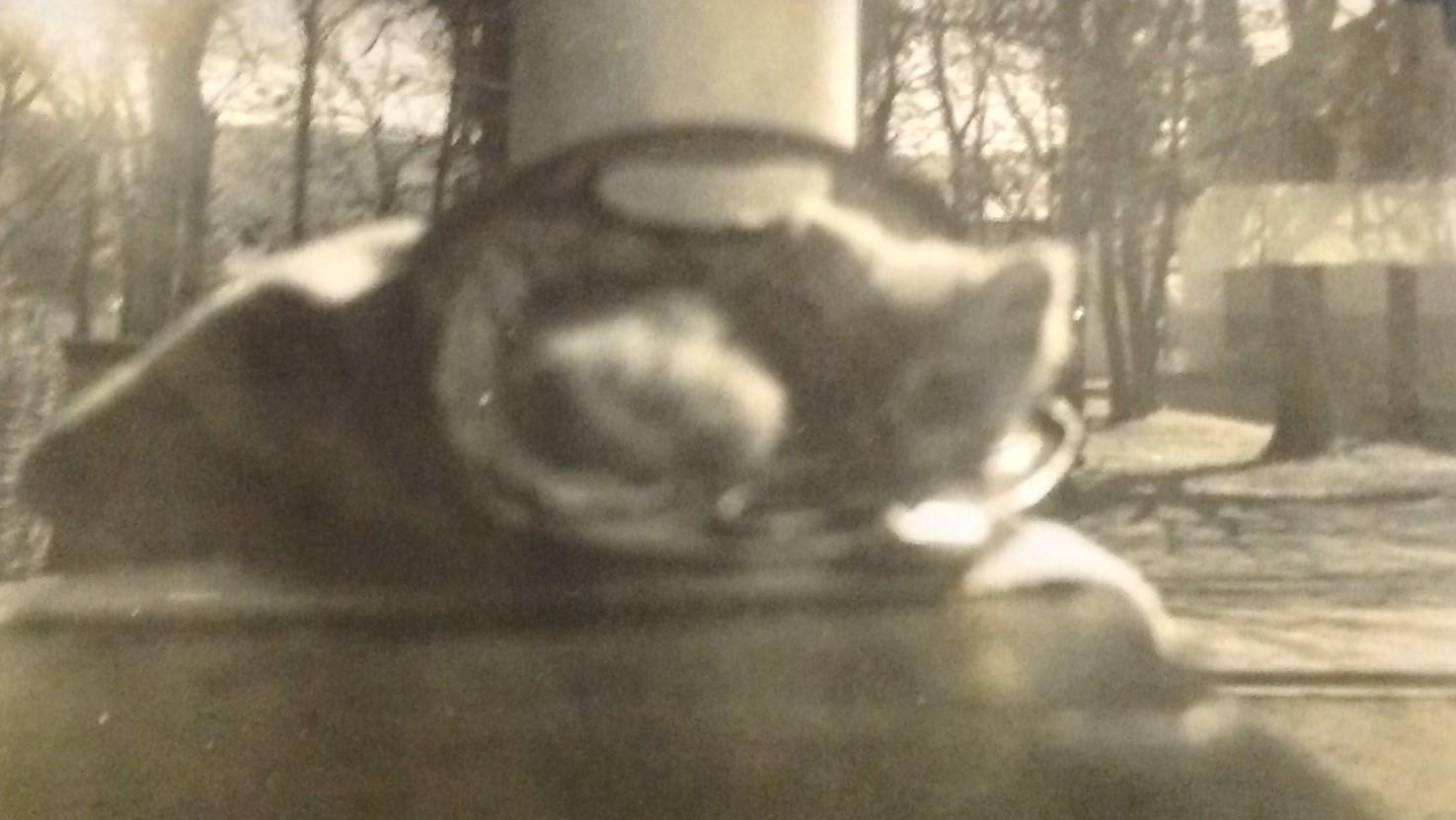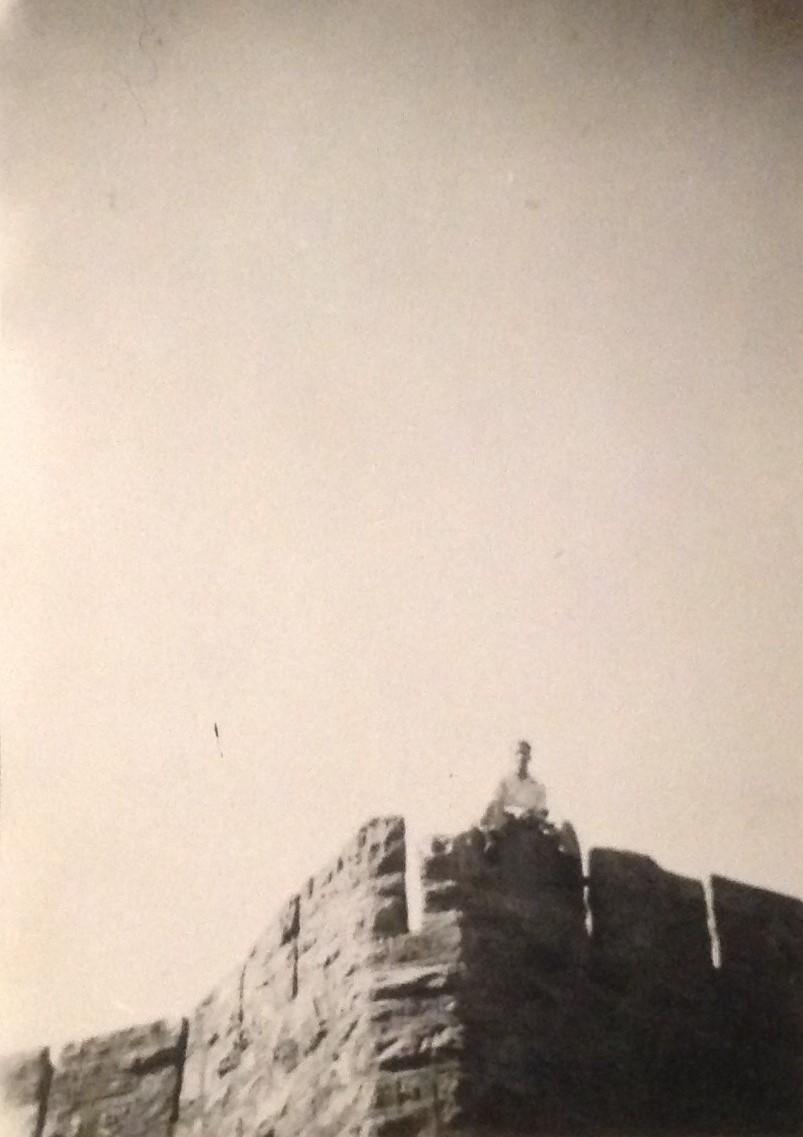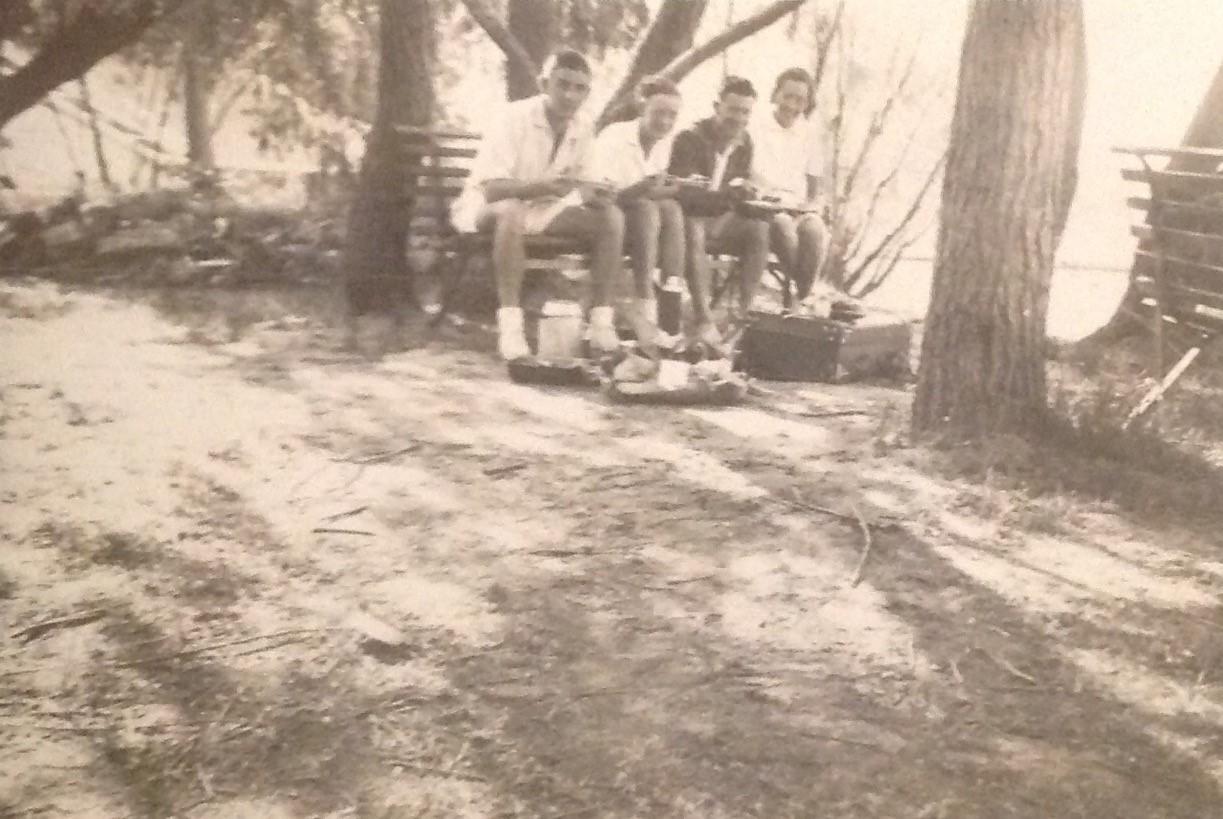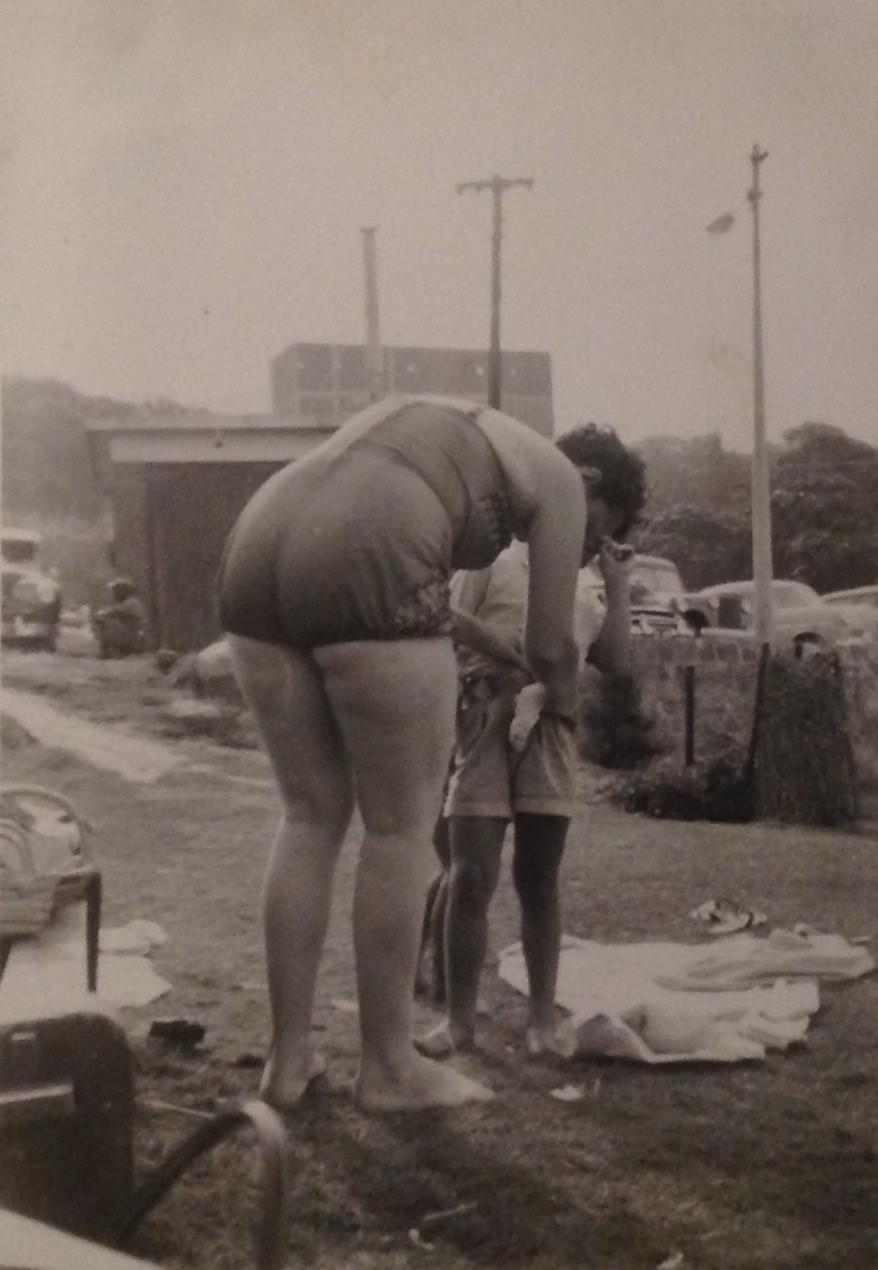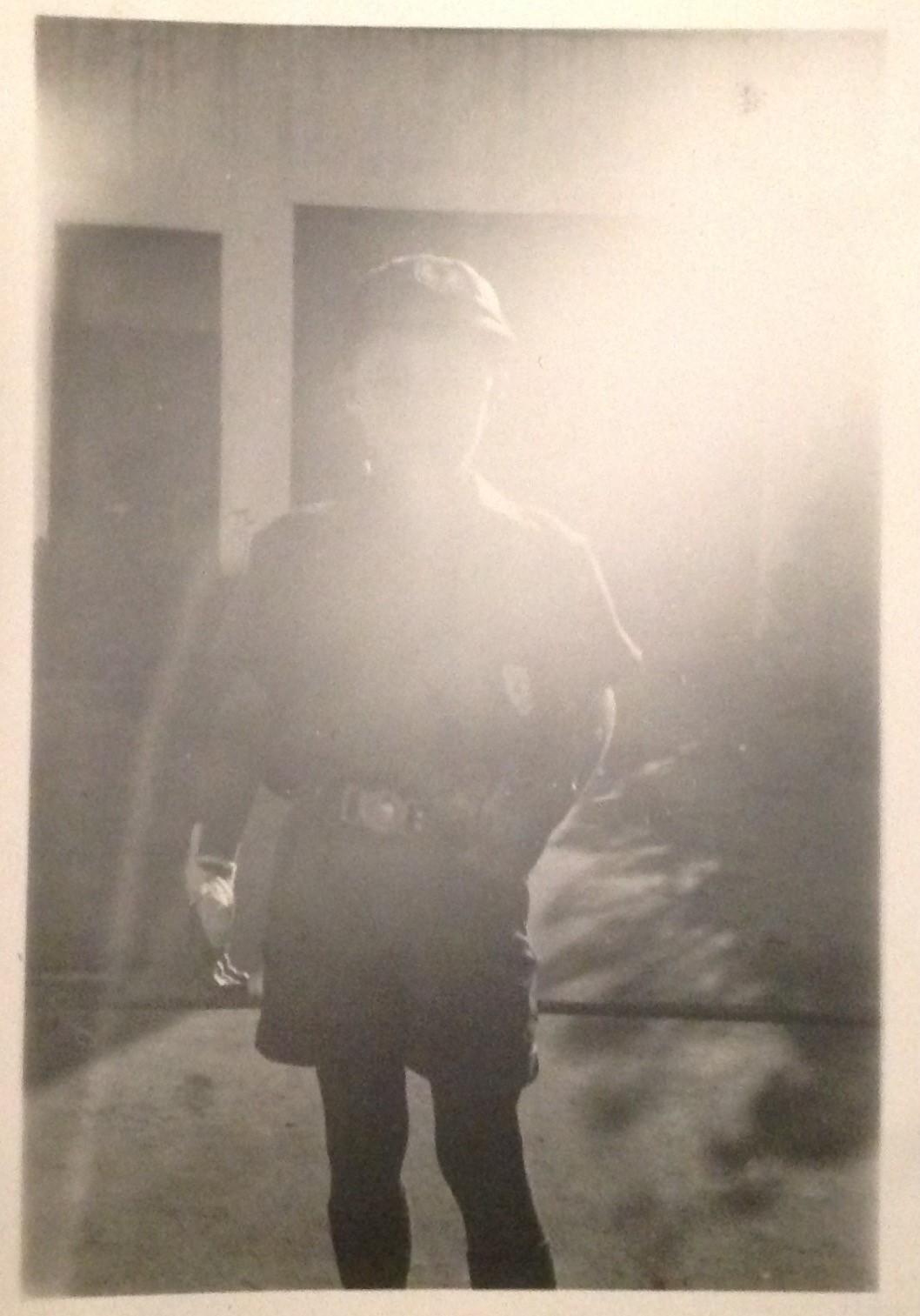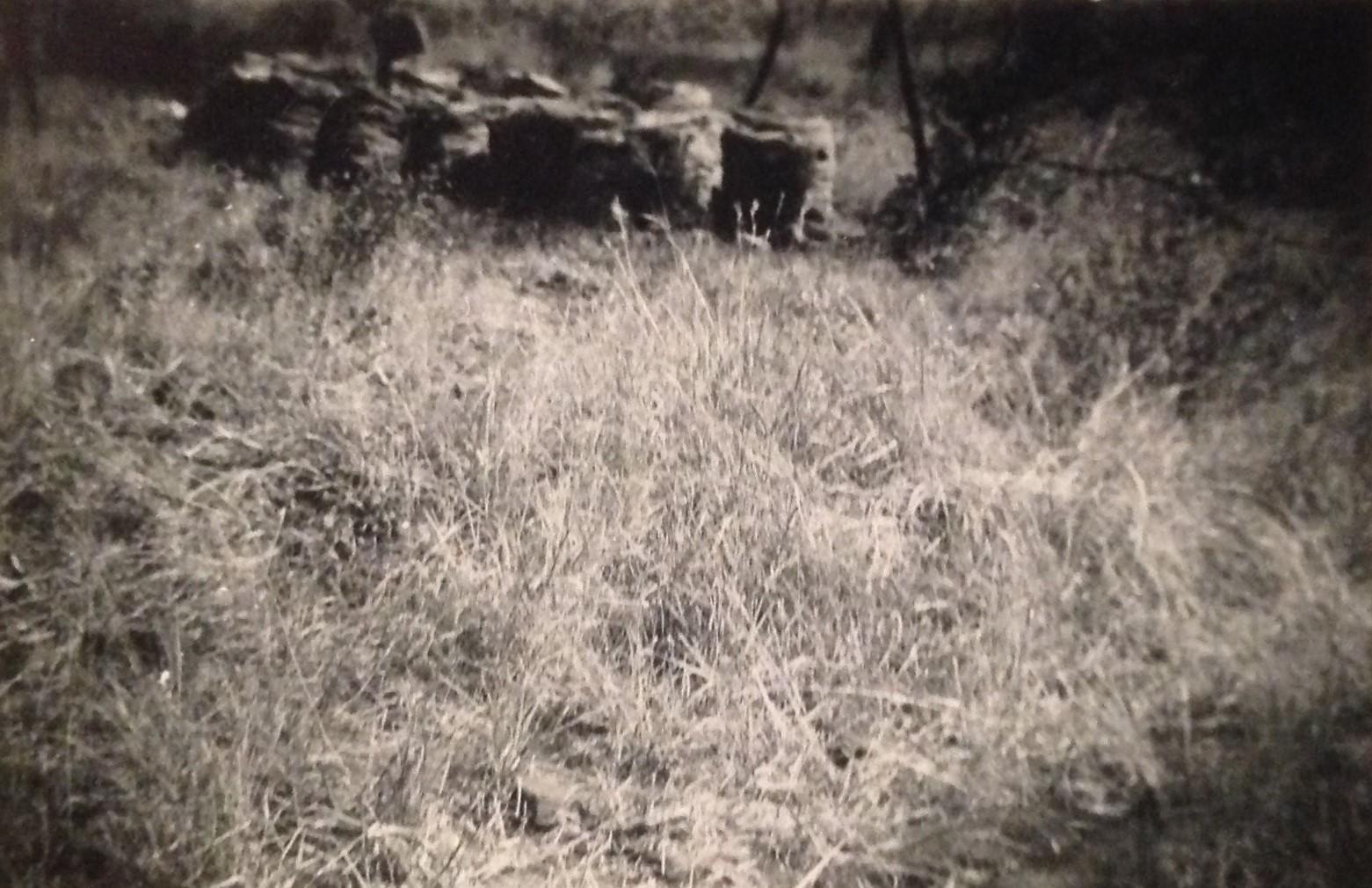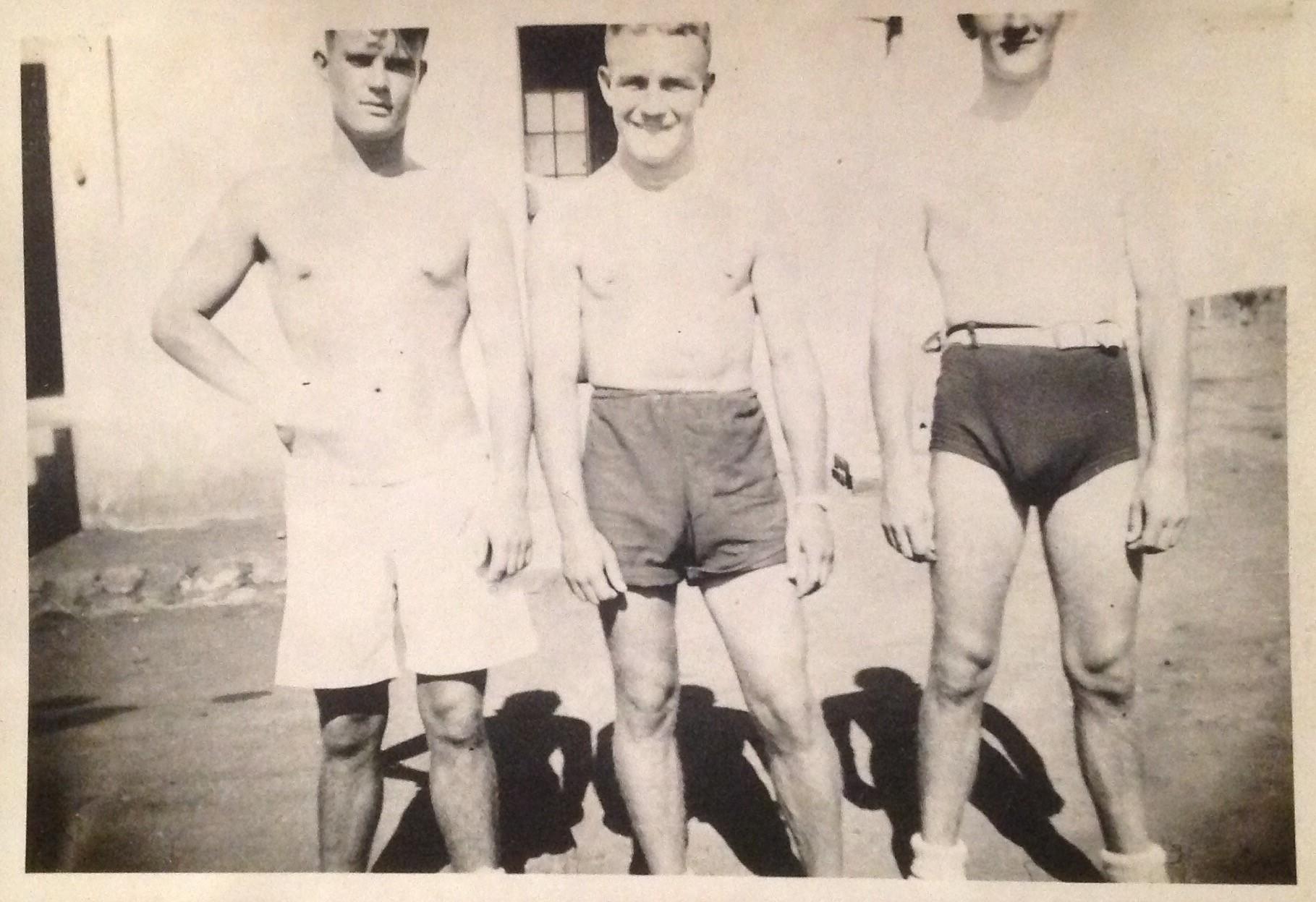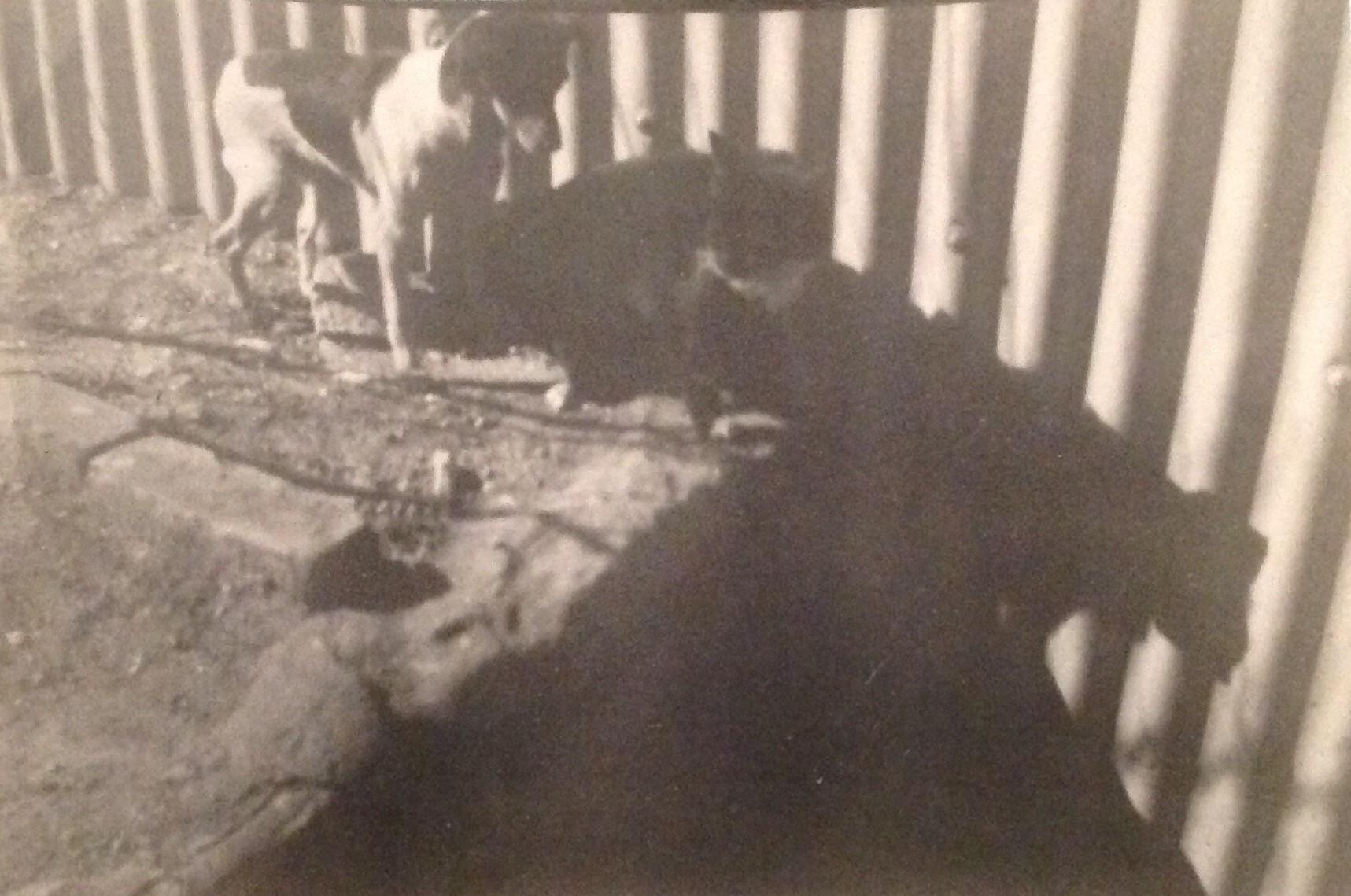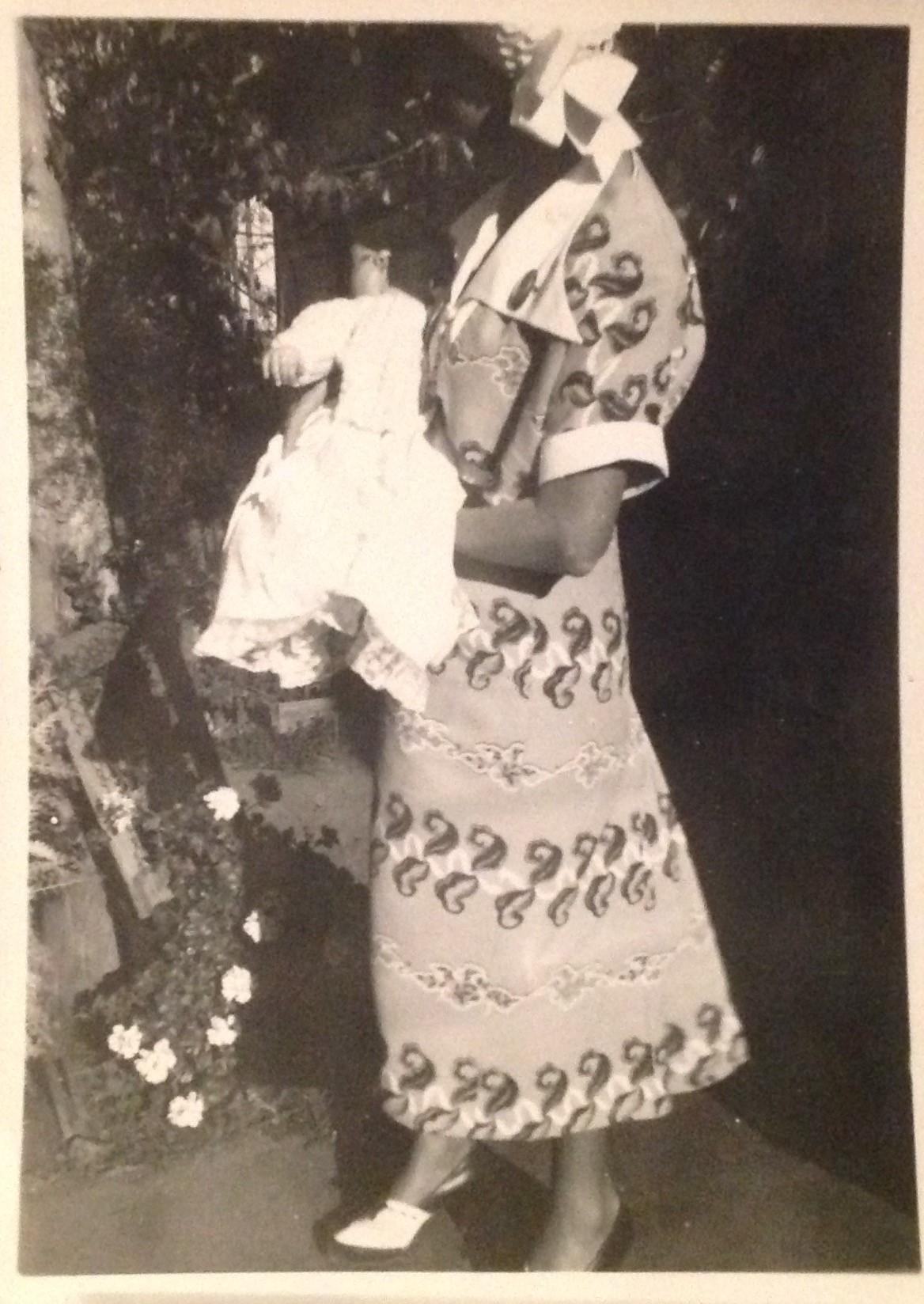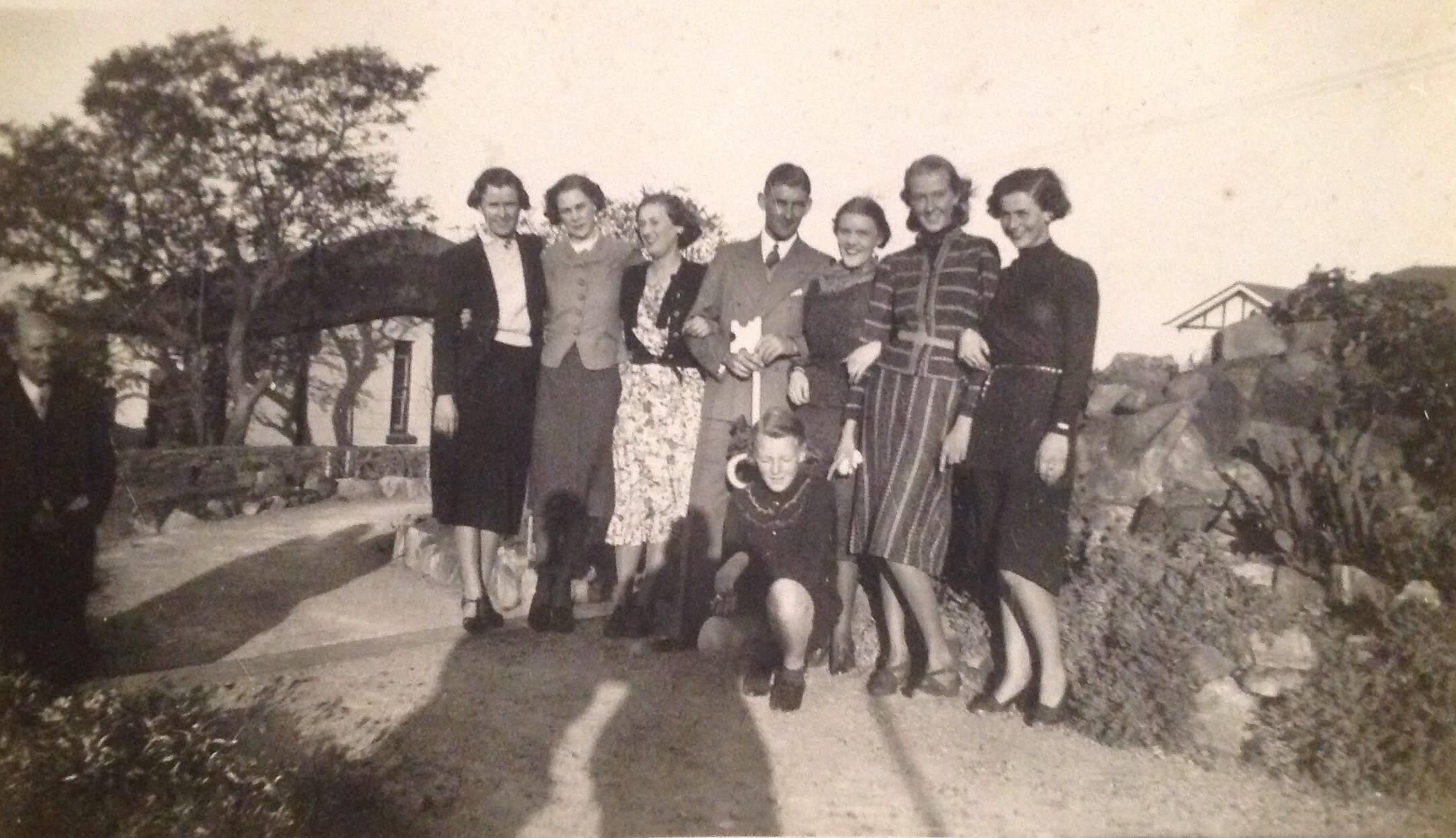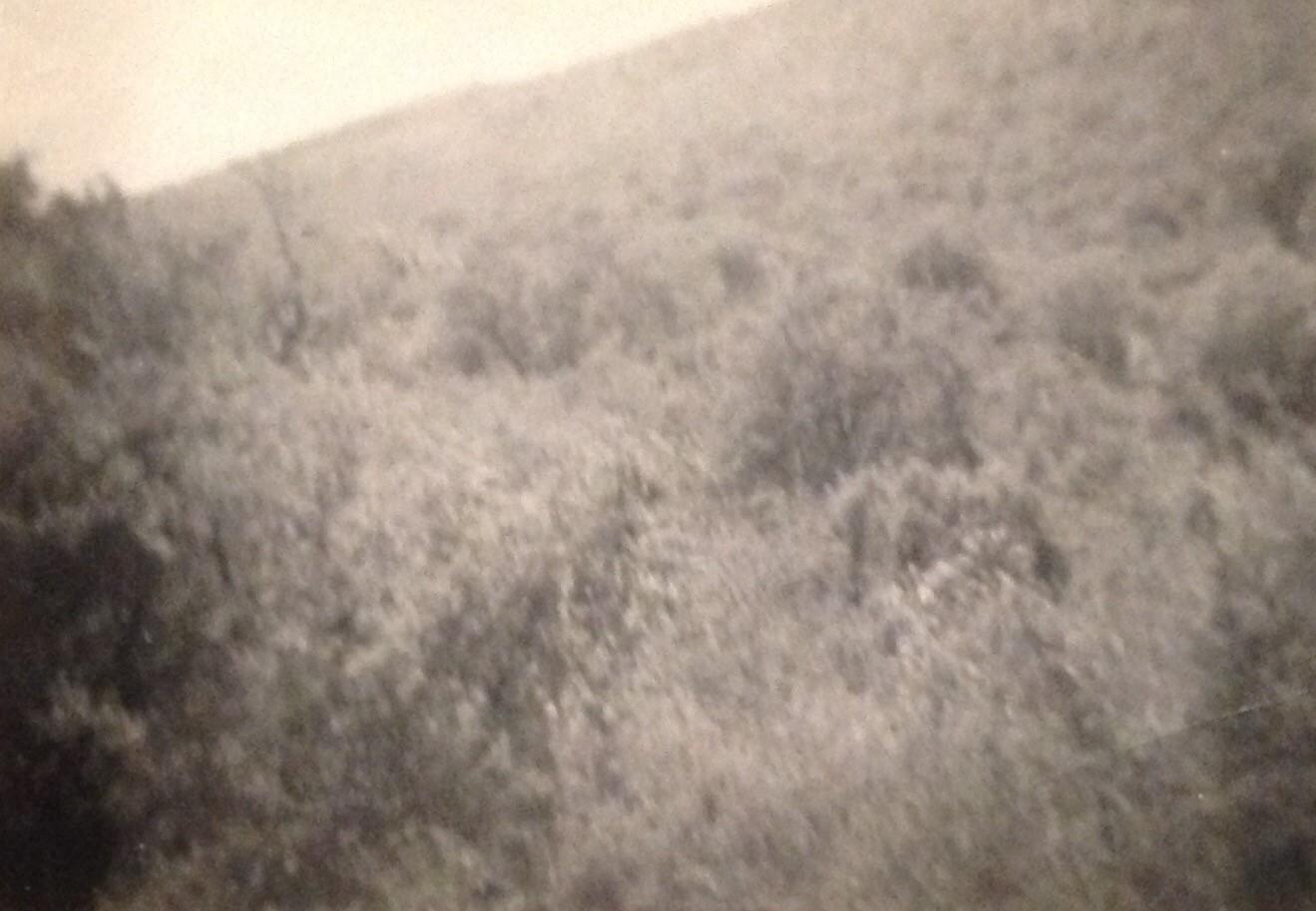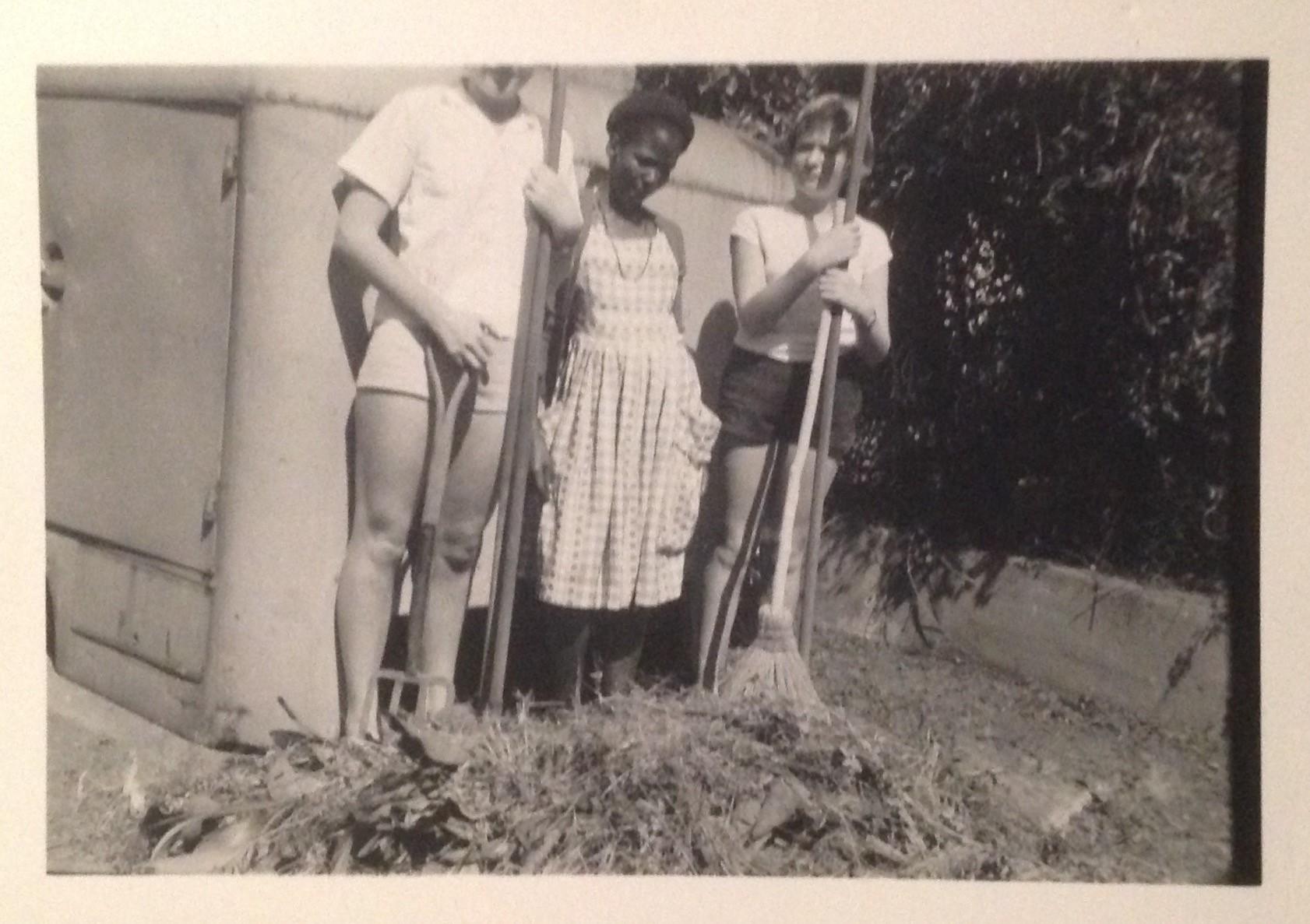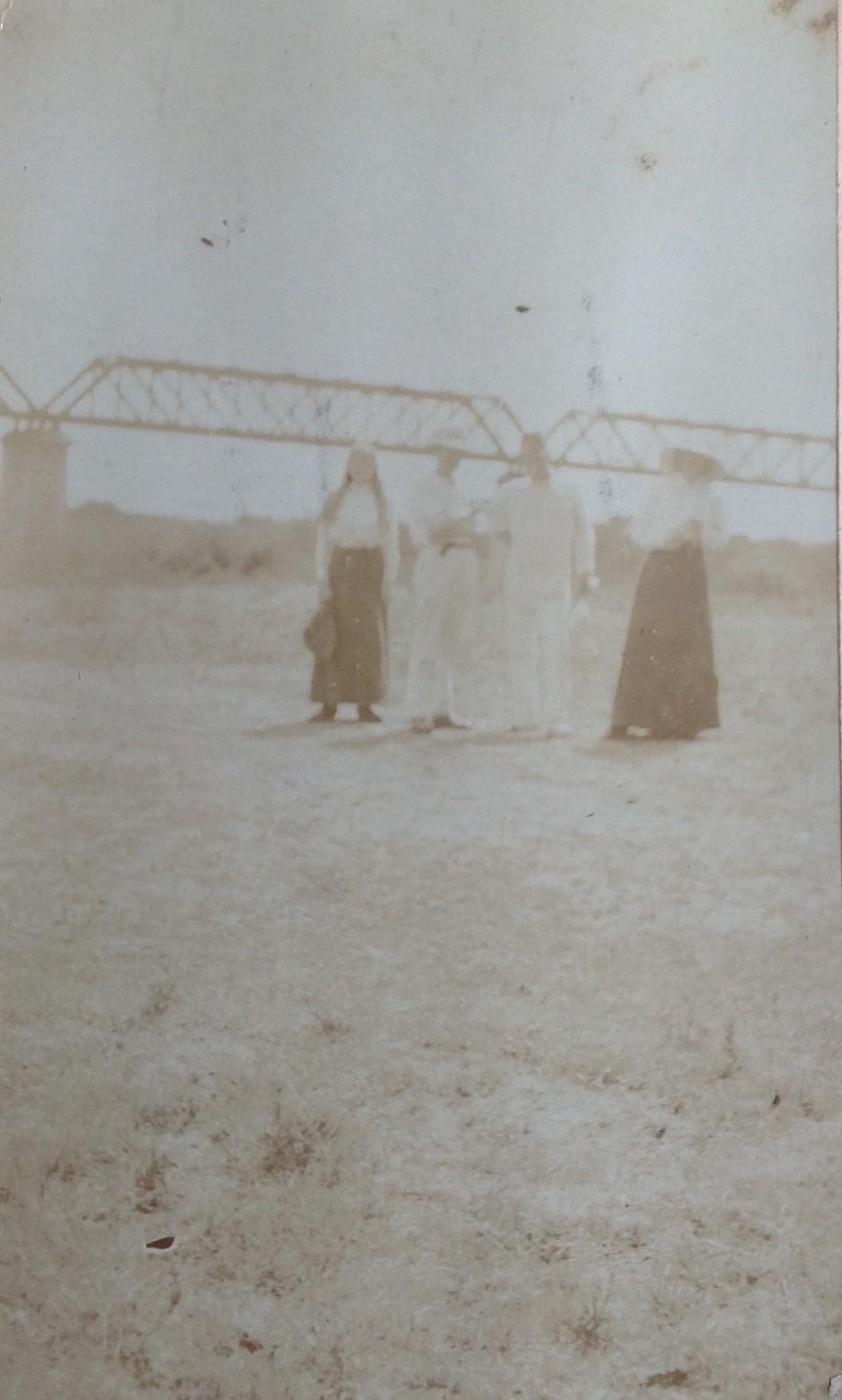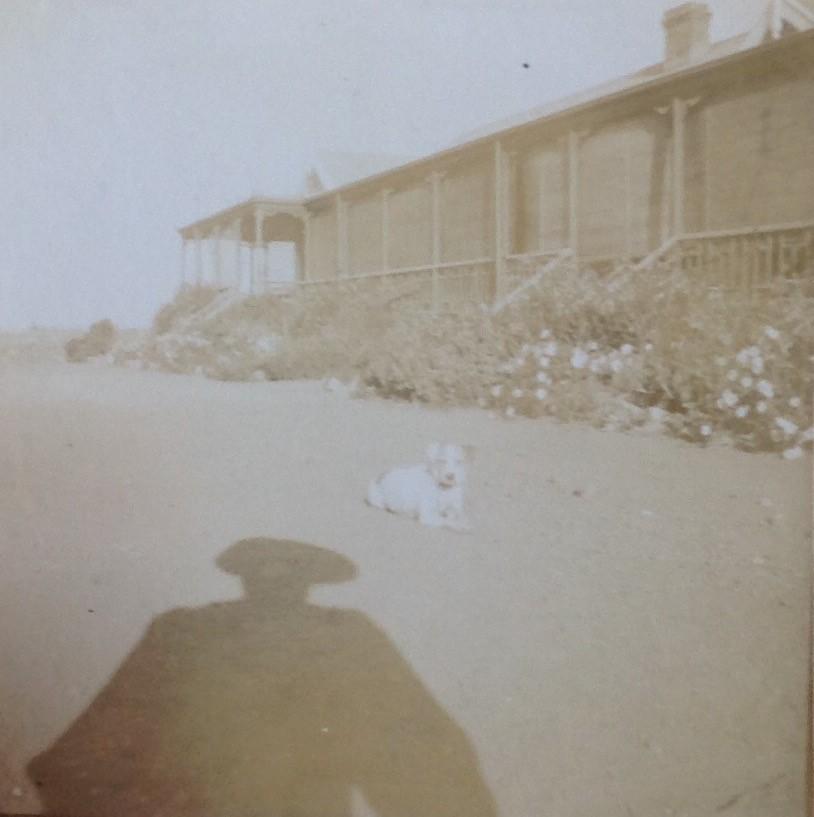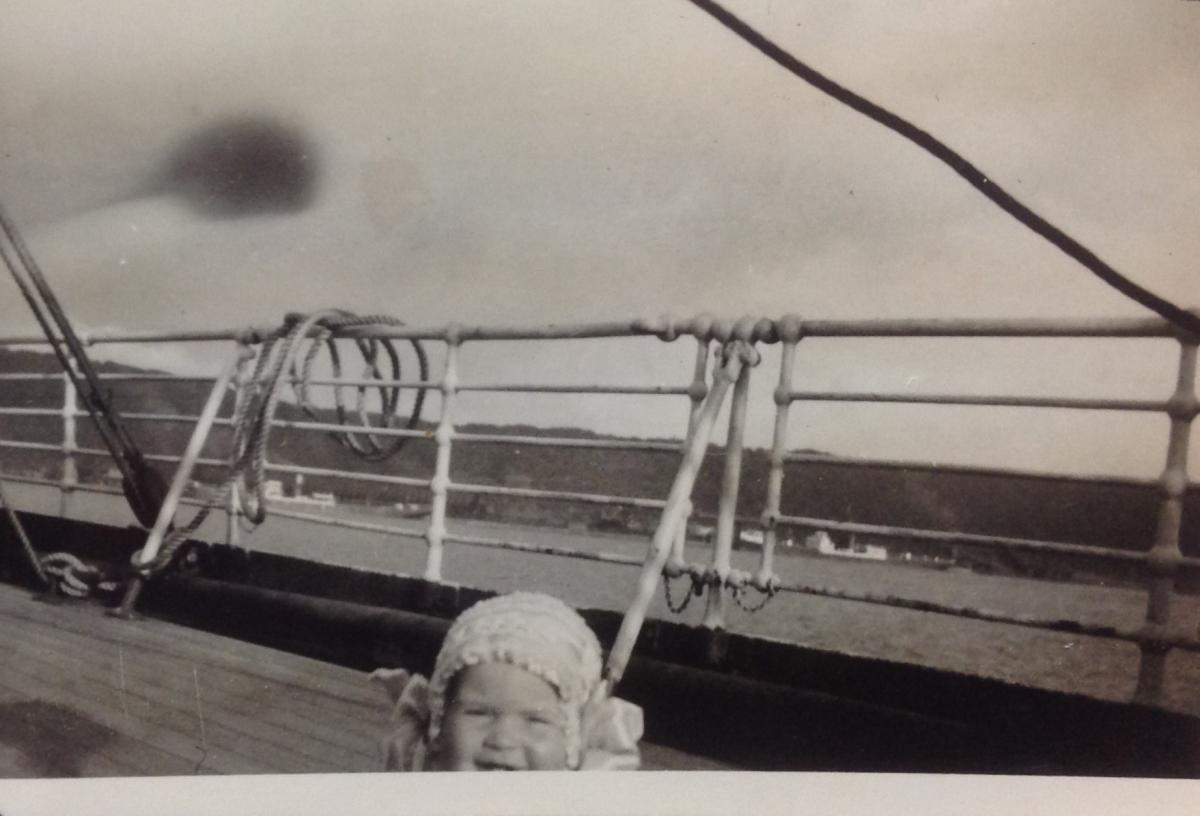
Disclaimer: Any views expressed by individuals and organisations are their own and do not in any way represent the views of The Heritage Portal. If you find any mistakes or historical inaccuracies, please contact the editor.
This article certainly deviates from the more serious range of articles on South African photographic history published by the author from time-to-time. An early caution therefore - The images included in this article are not visually aesthetic.
Many, many millions of snapshot photographs were produced by amateur photographers between the 1920s and 1940s - some of which were good, some bad, some provocative, some botched and some indifferent.
None of these should be ignored in that with time they have become historic records in themselves. With their endless ability to surprise, they have become a quirky alternative to photographic history.
This article reflects on the more trivial aspect of photography, namely botched snapshot photographs – those unintended photographic faux pax’s achieved during the earlier years of amateur photography.
Botched photographs fall into the category of found photographs.
Plenty vegetation, with only one young face barely visible. If it was not for the inscription on the back: “School picnic”, this image would not have made much sense
Guess what this could be? A German monument in Windhoek (Namibia). The identification of this “ghost” structure was simplified in that it is recorded in the album that the photographer was seconded by a South African petroleum company to Windhoek for a number of years. Without such vital information, this poor quality image would have been entirely meaningless
Gotcha – for a change being shorter than you has its benefits sis. I’m dad’s champ - I bet dad subtly attempted to exclude you from the image in that the family album already includes too many of you. The white border on top confirms that the composition was incorrect
Look dad! My sibling is pushing me out of picture. The white border on the left confirms that the composition was incorrect
Whether in focus or out of focus, my love for you my dear remains unconditionally focussed. By the way – what a splendid dress
Found photographs
Found photographs can be described as photographs which had an original context in family photo albums but following their loss (albums being thrown out) and subsequent rediscovery by collectors and researchers alike, they then result in the attempted recontextualization of photographic narratives in articles such as these.
Found photographs are artifacts of a peculiar kind because they were not meant to be viewed and interpreted by total strangers. Because the original contexts that anchored their meaning have been severed from them, found photographs foster a new and valuable "reading" disposition, one that sharpens our inferential skills and reflects upon our ordinary habits of perception (Mauer, 2001).
The best conclusions we can draw from found photographs are conclusions about ourselves - when we interpret found photographs we inadvertently reveal our own perceptual processes.
Combined with an anthropological interest in photographs as cultural artifacts, other conflicting responses potentially come into play when we encounter found photographs. Our voyeuristic fascination is fuelled by our own stereotypical judgements on the narrative an image may hold - a surrealist's glee in discovering the bizarre. Interpreting found photographs involves inference-making or making conceptual leaps from the known to the unknown (Mauer, 2001).
Sontag (1977) adds that photographs, which in themselves cannot explain anything, are inexhaustible invitations to deduction, speculation and fantasy.
For a majority of the found photographs included in this article, the photographers as well as their subjects remain unknown in that the albums that they were extracted from contained very little information around the subject matter or the original owners. These mysterious images portray a striking range of people, animals and objects, captured in scenes that may be witty, touching, sinister or surreal.
I understand – the photograph is not about me. I was simply sunning when my owner just had to photograph his handy work. He built the two pergolas as well as the water fountain
It’s a bird. Could simply not exclude Polly from the family album. Yes, that is Polly – our family parrot sitting in his cage - or was he a canary? I cannot remember
Sorry, can’t sit any longer – Need to go – that bird looks enticing
Colours black, white and grey provide for optimal colours when photographing the rustic ocean – No, that it not what I saw, the movement of the sea splashing against the rock was much more colourful and lively
You found the Kruger millions son! I will hide the location
Why write about abstract photographic genre such as botched photographs? Firstly, because botched snapshot images are abundant and can therefore not be ignored. Secondly, and probably more importantly, because it raises the curious question as to why any person would want to include sub-standard images in a family album. Thirdly, some botched images contain some unintended humour. These images may fall into a category of comic art. There certainly is an innocence that is portrayed through some of these images included.
Whilst the intent is to be playful with the resultant photographic blunders, readers are invited to accept the presentation and descriptions of the images in good gist.
Sontag (1977) states that nobody ever discovered ugliness in photographs. But many, through photographs, have discovered beauty.
There is however little beauty to be spotted in the botched images included in this article. Depending on the reader’s visual orientation, images may present some unintended humour whilst others could fall into an abstract art category. The reality remains, that some images will not fall into any category other than being dull, simple and non-sensical boring images.
Isn’t that cute – a kitten or two in a handbag – I think
When we travelled during the 1930s, we went to this castle. That is me sitting on the castle wall. Yes – that IS me!
Smile tennis team – you are on candid camera. Sorry, I did not know that the camera will allow me to stand closer
Grandpa! The manual states that you must not move when taking the picture – I do not want to end up all blurry in your album
Here is our evidence that we were at the beach – I’m telling you, this is my wife (her backside at least) and our eldest son
Snapshot photographs defined
With commercial picture making devices around since the 1900s, a new pastime came into being, appealing to those in all walks of life resulting in the snapshot photograph having become the ordinary person’s primary source of visual information throughout the half century prior to the Second World War.
The ubiquitous snapshot photograph from between 1920s and 1940s, largely found in family photo albums, probably still ranks amongst the top small object, paper ephemera found in older generational households. These images formed a part of people’s lives back then and still bring back special memories today for those that can relate, yet, slowly but surely these photographic memories lose their impetus as they are thrown out as the original owners either pass away or pass their memories on to family members who cannot relate to the photographic narratives contained in the photo albums.
To photograph is to confirm importance of the situation or event - important to the individual holding the camera at least.
Snapshot photography can be defined a is a leisure activity. It is about capturing the evidence of something – a documentary function. Snapshots have become a formal personal record.
A snapshot implies a picture taken quickly, with spontaneity and minimum prearrangement. Self-expression became real – where camera owners could snap away and express their own personal narratives.
Snapshot photographs were produced by people with no previous experience of, and no particular interest in, acquiring skilled photographic techniques.
Its essential characteristic therefore is that it was taken by the photographically untutored, motivated by the simple wish to record and perpetuate their life and times.
Snapshots were largely captured without any pretensions. They are mainly plain and unaffected records of people, pets, events and places. They are informal portraits freed from the constraint of the presence of the professional stranger where sitters could relax and adopt less inhibited poses.
Many amateurs had a naïve approach to their subject and lacked technical expertise. The snapshot is mainly taken on impulse, perhaps at random, with no attempt to manipulate the subject or wait for ideal conditions contributing to the genre of botched photography.
Just back from the nurse – Can you at least see my right thumb – I cut it whilst out on a Boys Scout camp – I got 7 stiches!
See all this grass? It will be mowed by the end of tomorrow. The bags of coal in the background will also be moved into storage.
Funny pants! I was so intrigued by them that I did not pay attention to include your full face in the image. An inscription on the back states that this photograph was taken at Tempe – a military base in Bloemfontein. The white border confirms that the composition was incorrect
So cute - Foxy and Blackie at play – No, No – they were actually fighting – Look at the cats ears
No sweetheart – I had no intention of making you and our new-born the main focus of this image – I just love your dress!
Botched photographs
Ironically, the photographer or eventual owner of the photographs, were immensely forgiving resulting in botched black and white photographs (kiekie - or the diminutive kiekietjie - as they are referred to by the older Afrikaans speaking population) still ending up in the family photograph album.
When dealing with visual images, the aesthetic cannot be escaped. As soon as the camera is raised, composition begins, determining the edge of the frame, the shape within it and the lighting and then deciding when to release the shutter. Intuitive or not, unconscious or not, these were aesthetic decisions where amateur photographers have often failed themselves.
Photography is not a hard-wired talent. The “language” of the old-fashioned camera needed to be understood. There are multiple elements in the art of early black and white photography such as line, shape, form, texture, size and depth.
A photograph can be described as having been botched where the image lacks proper composition due to amongst other not standing close enough to the subject or the contrast of the image has not been duly considered such as light (either too much, too little or shooting into the sun or having sitters look into the sun – also resulting in possible photographer shadows), objects in the way, focus and many more.
Thorn amongst the roses. Let’s capture the moment quickly before the sun goes down – Look into the sun please! Clearly a very important moment considering the three photographers (two shadows plus the chap kneeling on the left)
Cameras in use were typically simple, inexpensive cameras with few adjustments, designed for the amateur. Most entry level cameras did not have a lens that could be manipulated to assist in obtaining a focused image. It was up to the photographer to ensure that there was a suitable focused distance between the subject and the camera lens.
One of the most critical downfalls of any image is when the photograph is out of focus or blurry. This is often seen in images with children or dogs where the “sitter” moved during the exposure time. Regardless of why the image is out of focus, if it is blurry, it can never be good, but because the photographer had to invest money in buying and developing the film, there is an unconditional acceptance of the poor-quality images that has crept. With today’s modern digital technology, images can be assessed and deleted on the spot – with no cost incurred.
Botched photographs are largely wasted in that they do not portray a penetrating statement unless of course the narrative the image is meant to portray is explained to a viewer with an imaginative mind by the photographer. Some images would however have been very difficult to explain – such as the image title “At the foot of the mountain” included below.
Are you serious? I do not see anything! Inscription in the album states: “Teen die hange van die berge” (At the foot of the mountain)
Where a number of botched snapshot photographs are found in a single-family album, it may suggest the lack of visual literacy or visual intelligence of the original album owner.
Some amateur photographers would have been sufficiently selective by excluding botched photographs (which could not be avoided at best of times) from family albums. The visually literate or visually intelligent amateur would have excluded botched images from the family album by discarding them or keeping them in the film wallet they were placed in by the developing entity (mainly chemists in those years).
After a hard days’ work – at least for the two girls on the right. I left you out because you did not work nearly has hard as they did. White borders of the photograph confirms the incorrect composition of the image
It is actually not about the people – they are unknown to me - it is about the bridge in the background which was just completed last year
Disappearance of snapshot photographs
Previously described as omnipresent, old fashioned black-and-white snapshot photographs are slowly but surely disappearing.
Our knowledge and understanding of people and events has certainly increased since the commercialisation of popular photography, so it is sad that snapshot photographs to date have been regarded as beneath serious consideration by many photo historians.
Today, the standard narrative heard from charity organisations and inheriting album owners is that these images are of no interest and are therefore thrown away. What a shame – it is shortsighted to say the least in that despite their uncomplicated appearance, these images potentially contain visual and historical interests. As an example, one album recently recovered by the author contains good quality amateur photographs from the late 1930s of aircraft and air force personnel at South Africa’s oldest air force base in Pretoria, namely Swartkop. It is a sin to destroy such imagery.
Just think about it, the moment the dustbin lid closes on the discarded images, the lid also closes on a possible contribution to photographic history – however insignificant it may be.
How do I get a picture of myself with Fluffy and our recently purchased house – I know – Capture the image with the sun behind me and I will be included in the image and I can post to hubby who is out on a military campaign
Closing
It has become fun scouring old family photo albums, antique shops, charity stores, boot sales and antique fairs in search of snapshot photographs which may include these photographic miscreations. Whilst the author has not received any comments on his odd purchases, a seller or two must have thought – why buy such non-sensical rubbish?
The photographs included in this article form part of the Hardijzer Photographic Research Collection, all of which found their way into early South African family albums (1920s to 1940s).
Although some print errors have also occurred in producing these images captured on roll films of old, this article purely focuses on poorly composed images as produced by earlier photographers and not any print errors.
The author confirms, other than some images having being cropped, that none of the images included in this article have been manipulated in any way during the re-photographing process in order to obtain a botched effect. Interestingly enough, the device used to replicate these images was “objecting” against capturing some of the images as it was attempting to focus the image – amazing how photographic technology has improved over the past 100 years – something that earlier photographers did not have the benefit of.
Given our current sophisticated photographic technology, would botched photographs from post 2000 for example be a research theme in a hundred years from now? Unlikely.
Main image: Mom! This is the photo of the century! Did you manage to capture the flying stingray with me in the pic? This snapshot was clearly taken whilst on a seagoing vessel and therefore possible that the photographer lost their balance at the time of releasing the shutter. It is not known what the grey blob is on the top left of the image. The white border at the bottom confirms that the composition was incorrect
About the author: Carol is passionate about South African Photographica – anything and everything to do with the history of photography. He not only collects anything relating to photography, but also extensively conducts research in this field. He has published a variety of articles on this topic and assisted a publisher and fellow researchers in the field. Of particular interest to Carol are historical South African photographs. He is conducting research on South African based photographers from before 1910. Carol has one of the largest private photographic collections in South Africa.
Sources:
- Badger, G. (2003). Collecting photography. Mitchell Beazley. London
- Coe, B. & Gates, P. (1977). The Snapshot Photograph. The rise of popular photography (1888 – 1939). Ash & Grant. London
- Hardijzer Photographic Research Collection
- Mauer, B. (2001). The found photograph and the limits of meaning. Enculturation 3.2 (www.researchgate.net/publication)
- Sontag, S. (1977). On Photography. Penguin Books. London
- Traub, C.H.; Heller, S. & Bell, A.B. (Eds) (2006). The education of a photographer. Allworth Press. New York
- Young, M. (2014). Erik Kessels captures the 'Attack of the Giant Finger' (www.trendhunters.com)
Comments will load below. If for any reason none appear click here for some troubleshooting tips. If you would like to post a comment and need instructions click here.

